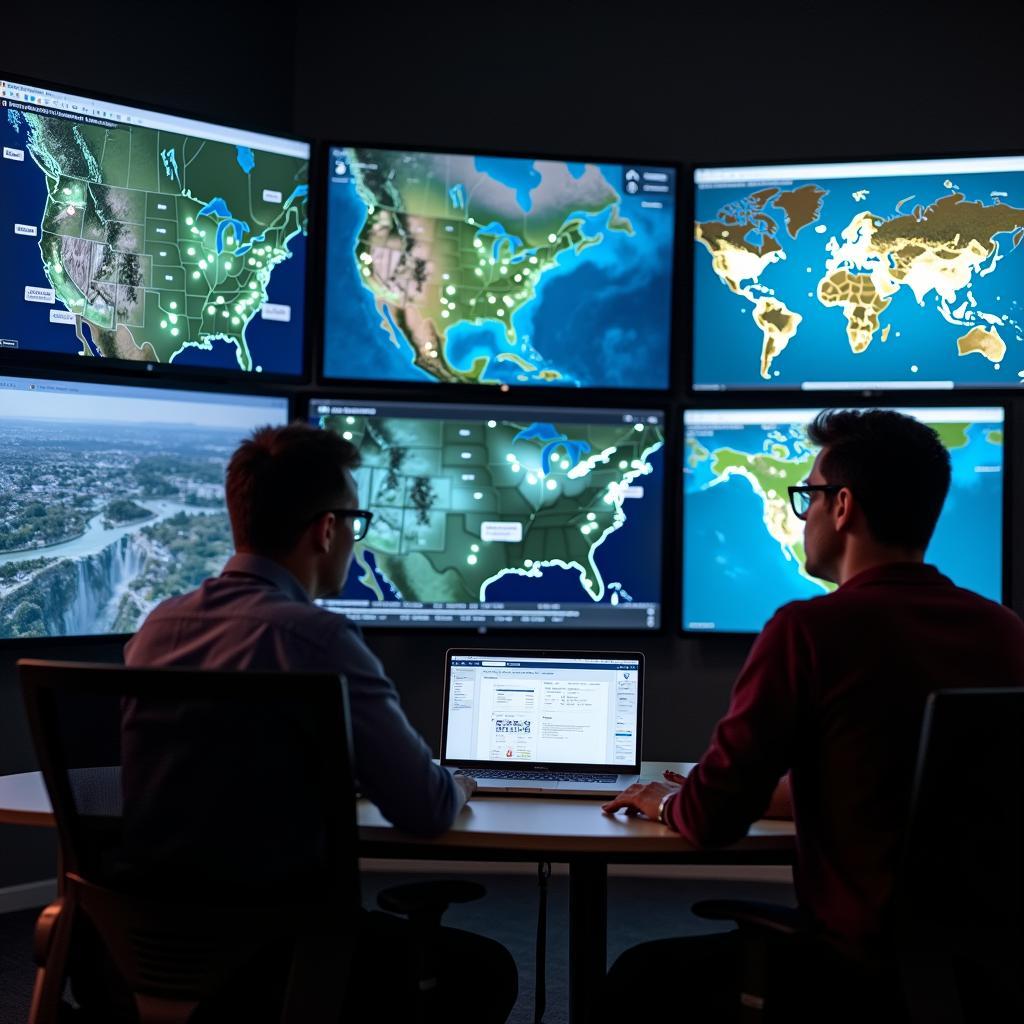Technology’s role in disaster recovery has become an increasingly common topic in IELTS Writing Task 2, appearing in various forms across recent test papers. This theme intersects with broader subjects like environmental protection, public safety, and technological advancement, making it highly relevant for future tests.
Table Of Contents
importance of disaster resilience planning has become crucial as communities worldwide face increasing natural disasters. Let’s examine a recent IELTS task 2 question on this topic:
Some people believe that modern technology can prevent most natural disasters and minimize their effects on human life and property. To what extent do you agree or disagree with this statement?
Analysis of the Question
- Topic: Technology’s effectiveness in disaster prevention and mitigation
- Task: Opinion essay (agree/disagree)
- Key points to address: Prevention of disasters and reduction of their impacts
- Focus areas: Both human life and property damage

Sample Essay 1 (Band 8.5)
In recent decades, technological advancements have revolutionized our approach to natural disaster management. While I largely agree that modern technology plays a crucial role in mitigating disaster impacts, I believe its capacity to prevent natural disasters entirely is somewhat limited.
Modern technology has undoubtedly enhanced our ability to minimize disaster impacts. Advanced early warning systems, utilizing satellite imagery and artificial intelligence, can predict hurricanes, tsunamis, and earthquakes with unprecedented accuracy, allowing communities to evacuate and prepare effectively. For instance, Japan’s sophisticated earthquake detection system provides crucial seconds of warning before major tremors, enabling automatic shutdown of critical infrastructure and potentially saving countless lives.
However, the complete prevention of natural disasters remains beyond current technological capabilities. While how technological innovation can prevent natural disasters continues to evolve, we cannot yet stop volcanic eruptions or prevent tectonic plate movements. Instead, technology’s strength lies in disaster preparedness and response. Cloud computing and big data analytics help authorities plan evacuation routes and allocate resources more efficiently, while drone technology and robotics assist in search and rescue operations.
Looking at property protection, modern engineering and construction technologies have significantly improved building resilience. Smart materials and adaptive architectural designs can help structures withstand extreme weather conditions, though they cannot guarantee complete protection against the most severe natural phenomena. Furthermore, how space technology can address global water scarcity demonstrates how satellite monitoring can help predict and manage flood risks.
In conclusion, while technology cannot entirely prevent natural disasters, its role in prediction, preparation, and response is invaluable for protecting human life and property. The focus should remain on developing more robust warning systems and resilient infrastructure rather than attempting to prevent unavoidable natural phenomena.
Sample Essay 2 (Band 6.5)
I partly agree that modern technology helps with natural disasters, but it cannot stop all of them from happening. This essay will discuss both the benefits and limitations of technology in disaster management.
Technology is very helpful in warning people about disasters. Weather satellites can see storms coming, and computers can predict when earthquakes might happen. This helps people get ready and move to safe places. Also, strong buildings made with new technology can protect people better during disasters.
However, technology cannot stop many natural disasters. We cannot stop volcanoes from erupting or prevent earthquakes. Even with good technology, disasters still happen and cause damage. The tsunami in 2004 showed that even with warning systems, many people still got hurt.
Modern technology is better at helping after disasters happen. Rescue robots can find people in damaged buildings, and phones help people call for help. why mental health services are essential in crises shows how technology supports recovery efforts through online counseling and support services.
In conclusion, while technology is very useful for managing disasters, it cannot prevent all of them. We should use technology to prepare better and respond faster to natural disasters.
Vocabulary to Remember
- Mitigation (n) /ˌmɪtɪˈɡeɪʃn/ – the action of reducing the severity of something
- Unprecedented (adj) /ʌnˈpresɪdentɪd/ – never done or known before
- Resilience (n) /rɪˈzɪliəns/ – the capacity to recover quickly from difficulties
- Infrastructure (n) /ˈɪnfrəstrʌktʃə/ – basic physical structures needed for society
- Phenomena (n) /fəˈnɒmɪnə/ – remarkable developments or occurrences
For practice, try writing your own essay about importance of disaster preparedness in schools and share it in the comments section for feedback. Remember to focus on both technological solutions and their limitations while maintaining a clear structure and using appropriate academic vocabulary.